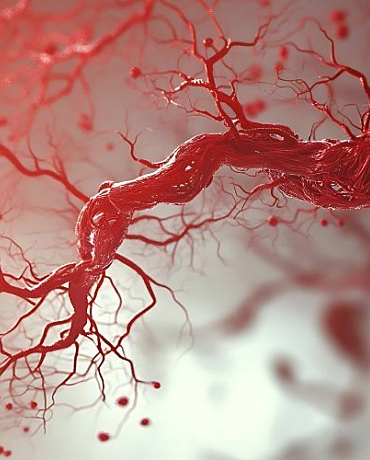New research from Neuroscience Research Australia (NeuRA) and UNSW Sydney shows, for the first time, an association between specific brain morphological networks, mental wellbeing and resilience in healthy adults with varying levels of childhood stress or trauma.
Early life stress (ELS) is a well-known risk factor for mental health problems in adulthood. And while changes in numerous brain structures have been reported to be associated with traumatic life experiences, not everyone who experiences trauma will develop psychopathology and may instead develop mental resilience.
In collaboration with Stanford University, NeuRA/UNSW researchers set out to investigate why this is the case by examining the relationship between brain structural networks, wellbeing and resilience, comparing those who experienced early life stress to those without.
Their findings, recently published in Nature’s Translational Psychiatry, demonstrate that early life stress exposure has an effect on the brain-wellbeing relationship in adults, and that people who were also identified as resilient (those with high wellbeing and previous ELS exposure) displayed stronger connections between prefrontal and parietal regions of the brain.
This study is also the first to quantitatively show that cognitive reappraisal – an emotional regulation strategy that involves reframing how you think about different emotional or stressful situations – has a significant effect on the links between the brain and mental wellbeing.
“Resilience is a dynamic process that includes reducing the impact of disturbances, in this case a traumatic or stressful event in early life, on wellbeing and a swift recovery after exposure,” said Dr Haeme Park, Senior Postdoctoral Fellow at NeuRA.
“What our research found was that being exposed to trauma in early life can have a marked effect on both brain structure and wellbeing into adulthood, but this does not always lead to an ongoing negative mental health outcome. Learning to adopt adaptive emotion regulation strategies was demonstrated to help boost resilience, which is a really encouraging finding.”
“It’s also important to realise that you can be ‘languishing’ and therefore have a low level of wellbeing, and this can be observed in brain differences compared to those with high wellbeing – both in people who have and have not experienced significant stress or trauma in their early life.”
Researchers utilised brain anatomical scans from the landmark TWIN‑E study and 242 healthy Australian adults, measured wellbeing and resilience with the COMPAS‑W scale (previously developed by the Gatt Resilience Lab at NeuRA/UNSW) and utilised a novel method of examining the whole brain to see how structural networks might differ between resilient and non-resilient participants.
They also used structural equation modelling to determine whether using emotional regulation strategies changed the relationship between the brain and the level of one’s resilience.
“We are very excited about these new findings as they help us understand the underlying neurobiological mechanisms of wellbeing and resilience, building on our existing framework and outcomes,” said Associate Professor Justine Gatt, Lead Scientist of the Gatt Resilience Lab at NeuRA and UNSW.
This work is the most recent publication from the multidisciplinary Gatt Resilience Lab which explores the multidimensional factors that contribute to mental wellbeing and resilience – in this instance, what makes some people more equipped to deal with trauma than others? How can we use this information to help others who may not yet be as resilient? Their next research goal is to use longitudinal data to explore how our levels of wellbeing and distress change over time, and how our brain changes in response to these outcomes, and whether factors that predict resilience can be identified.




